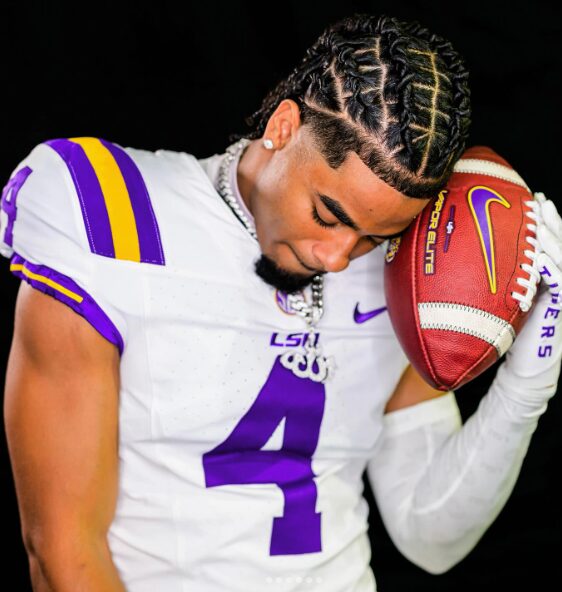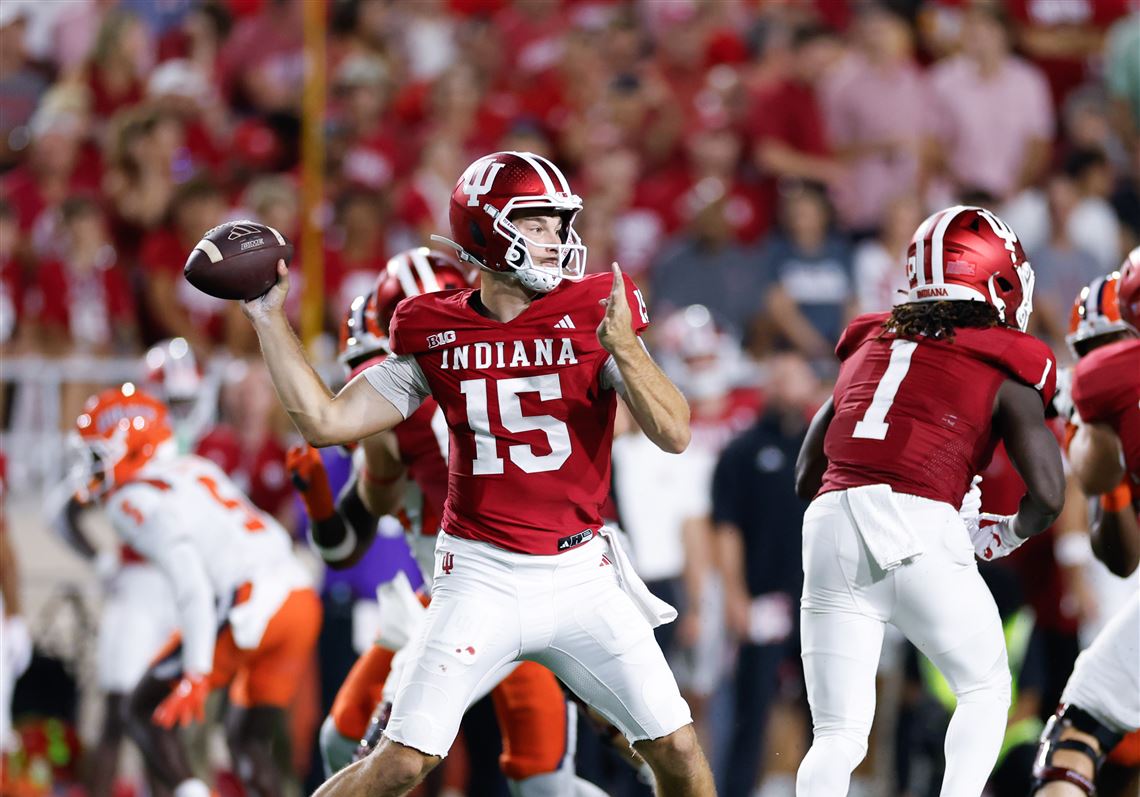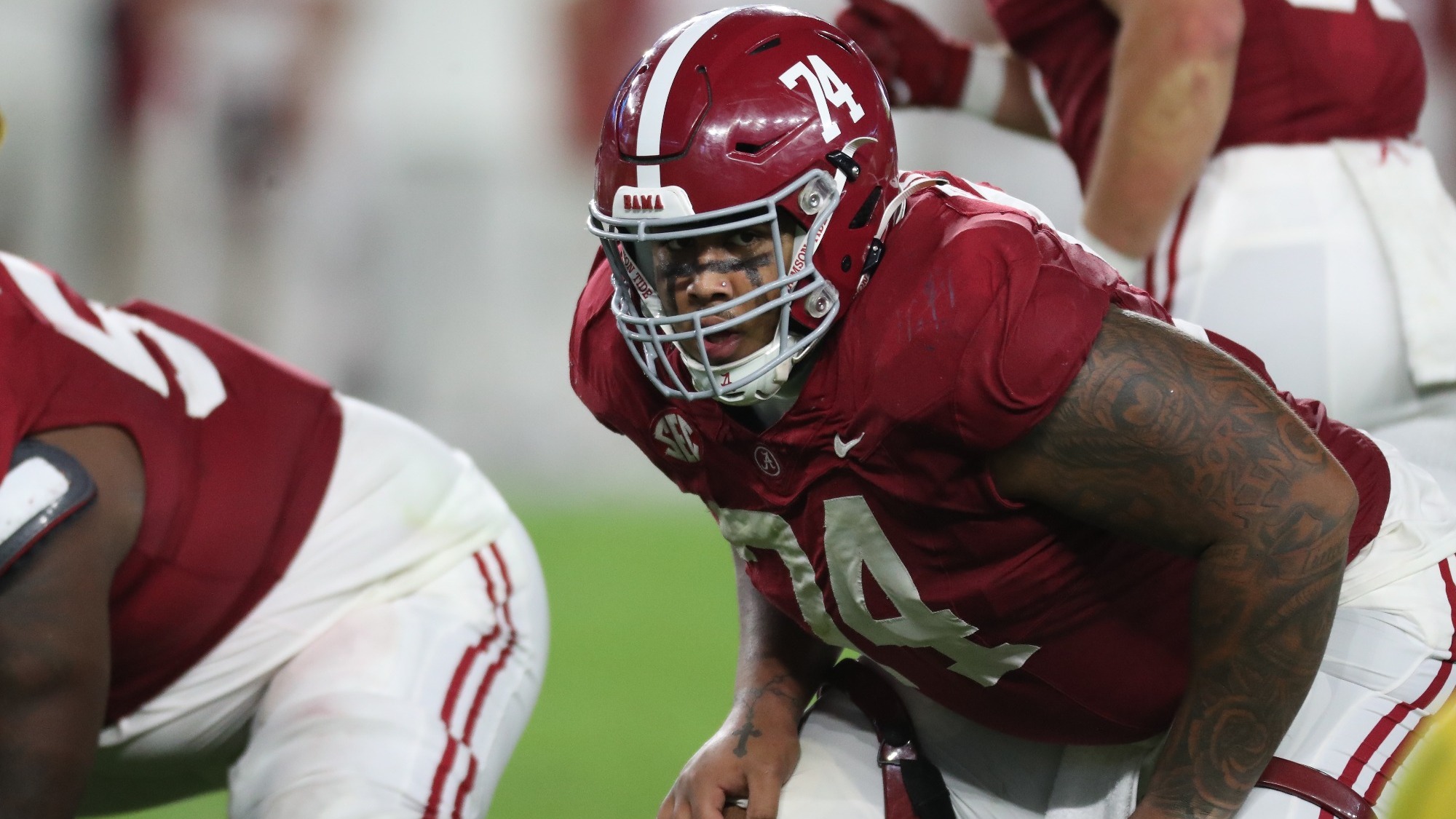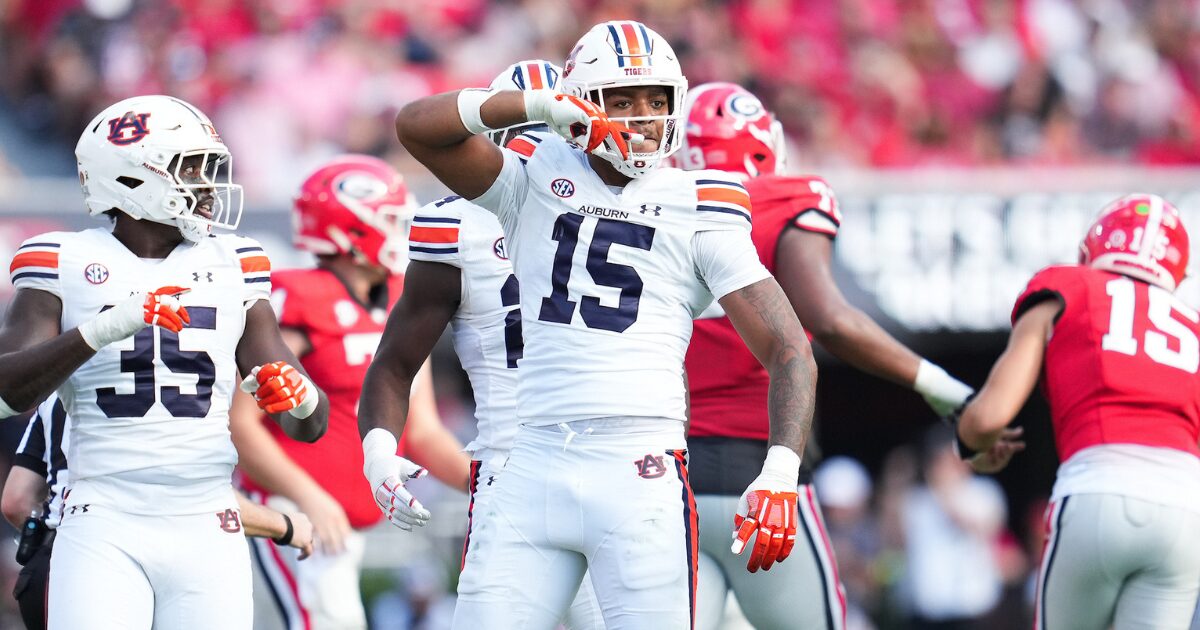By Charlie Campbell.
Send Charlie an e-mail here: [email protected]
Follow Charlie on Twitter @draftcampbell for updates.
This page was last updated March 31, 2022. Follow me @walterfootball for updates.
Position Review: Defensive Tackles
Defensive Tackle Class
Early-round talent: C-
Mid-round: C-
Late-round: D+
Overall grade: C-
Merging the 2022 and 2021 prospects
Travon Walker
Jordan Davis
Christian Barmore
Devonte Wyatt
DeMarvin Leal
Zachary Carter
Levi Onwuzurike
Alim McNeil
Milton Williams
Travis Jones
Perrion Winfrey
Phidarian Mathis
Osa Odighizuwa
Jay Tufele
Bobby Brown III
Tyler Shelvin
Just to be clear this article and series is all my opinion based off my own study and information I’ve gotten from general managers, directors of college scouting, national scouts, area scouts, and NFL coaches who know way more than I do.
Last year was a terrible year for defensive tackle talent, with none taken in Round 1, only two selected in Round 2, and only three drafted in Round 3. The 2022 NFL Draft has a better class, but it is still underwhelming overall. Some NFL team sources view Travon Walker as a future defensive tackle, so I’m going to include him in this write-up.
Travon Walker and Jordan Davis are better prospects than Christian Barmore was, and Barmore really isn’t close. Walker is a top-of Round 1 talent and Davis is a legit top-20 talent, while Barmore was a true second-rounder. DeVonte Wyatt, DeMarvin Leal and Zachary Carter are better prospects than Levi Onwuzurike, who was a second-round pick in 2021. Alim McNeil and Milton Williams, who both went in Round 3, were better defensive tackle prospects than Travis Jones, Perrion Winfrey and Phidarian Mathis. Those three, however, are better than Osa Odighizuwa, Jay Tufele, Bobby Brown and Tyler Shelvin.
Safest Picks: Travon Walker and Jordan Davis, Georgia

Previous Picks:
2021: Christian Barmore
2020: Derrick Brown
2019: Christian Wilkins
2018: Vita Vea
2017: Jonathan Allen
2016: Jarran Reed
2015: Leonard Williams
2014: Louis Nix
2013: Star Lotulelei
Looking at the past years, I was way off on Nix, but the rest all of turned into solid pros. This year, I’m going to pick two players because Walker could be a hybrid end/tackle in the NFL. If he plays tackle exclusively, as some teams are projecting, he could be a star three-technique. If he goes to a team that wants him to drop weight and play defensive end exclusively, Davis would fit be the safest defensive tackle in the 2022 NFL Draft.
Walker is a dynamic interior pass rusher with excellent speed, athleticism and power. He is a hard charger who has a ton of upside for the next level. On top of his rush ability, Walker is a tough run defender who is strong and physical at the point of attack.
The massive Davis is a monster on the line, eating up blocks, pushing into the backfield, and clogging up rushing lanes. He is a super run defender who can contribute some pass rush. Davis is a very safe pick to be an excellent nose tackle in the NFL.
Biggest Bust Potential: Perrion Winfrey, Oklahoma

Previous Picks:
2021: Marvin Wilson
2020: Ross Blacklock
2019: Jerry Tillery
2018: Maurice Hurst
2017: Malik McDowell
2016: Robert Nkemdiche
2015: Mario Edwards Jr.
2014: Anthony Johnson
2013: Jesse Williams
Reviewing the past, I have a pretty good track record here. McDowell was a huge bust for the Seahawks. Nkemdiche was a huge bust for the Cardinals. Edwards was a bust for Oakland. I was right about Anthony Johnson and Jesse Williams, although both of them fell in their drafts and weren’t the early-round prospects who some in the media made them out to be. Hurst has not been special for the Raiders. Tillery is the one exception, having become a solid pro for the Chargers. Blacklock had a rough couple of years to start his career, but it is still too early to pass any judgement.
Winfrey has some ratings and projections in the top 50, and there is no doubt that he has a good skill set. Winfrey, however, is terrible against the run and gets destroyed in the ground game. He lacks instincts, and he needs a lot of work to increase his capability as run defender. On top of those issues, team sources have huge character concerns with Winfrey and wonder if he will be able to avoid suspensions given some of his off-the-field habits. Winfrey definitely has serious bust potential.
Defensive Tackles Rankings by Attributes
Pass Rush:
NFL prototype: Aaron Donald, Rams
- Travon Walker
- Perrion Winfrey
- DeMarvin Leal
- Zachary Carter
- Devonte Wyatt
- Phidarian Mathis
- Jordan Davis
- Travis Jones
Recap: The NFL is always searching for interior linemen who can get after the quarterback. They are a hard commodity to find, and one can make a massive impact on a team’s ability to rush the passer. Tackles who can rush the quarterback set up a lot of sacks for edge rushers via disruption and double-teams. The fastest way to get to a quarterback is from up the middle, and even just forcing quarterbacks to get off their drop spot hurts the passing game. Pass rush up the middle is more disruptive for quarterbacks than edge rushing.
Walker is a versatile and capable pass rusher. He possesses surprising speed, athleticism, agility and explosion for a thick-bodied defensive lineman. Walker shows an explosive burst to close once he gets free. With natural power, Walker can bull rush through offensive tackles or guards rolls them back to the signal-caller. Walker also has quality vision, recognition, and ability to adjust to quarterbacks. With his speed and explosion, Walker can dart past guards and get upfield in a blur. When Walker gets to the quarterback, he puts them into the turf with serious violence and physicality. He has dynamic interior pass-rush potential for the NFL.
Rushing the passer is the only thing that Winfrey does well for his football team. He is quick off the ball and capable of firing his gap to get upfield. With his bulk and size, Winfrey is able to work off blocks and continue to collapse the pocket. He has a real burst to close that can be seen in both phases. Winfrey shows a swim move to go along with some speed and power, but he needs to develop more pass-rushing moves for the NFL.
In the pass rush, Leal is a real threat on the interior. He has a quick first-step and is able to fire his gap to work upfield. Thanks to nice agility and fluidity, Leal is a slippery rusher on the inside, and offensive linemen struggle to get a firm hold of him. If Leal gets stronger, that would help him to shed blocks, but he could be a valuable interior pass rusher in the NFL.
Carter has the ability to fire his gap in the pass rush. He uses some functional strength to shed blocks and can close quickly on the quarterback. Carter can line up over the outside shoulder of the guard and is good at acheiving penetration into the pocket. Carter also can beat right tackles with quickness around the edge. He has a nice lean and ability to sink his hips toward the quarterback. Carter could be a nice asset to line up over a variety of offensive linemrn and go after the quarterback. He may never produce huge sack numbers in the NFL, but he could be a quality pass rusher who contributes to the rush package.
Wyatt is a capable interior pass rusher. With his burst off the snap, he can fire upfield to penetrate into the pocket, and his relentless motor helps him to finish rushes by outfighting blockers to get to the quarterback. Wyatt uses active hands to keep guards from getting a hold of him, and his natural pad level keeps him low with good leverage. Aided by his quality athleticism and agility, he can contort his body to dip underneath blockers and keep gaining on the quarterback. Wyatt, however, lacks length and needs more pass-rushing moves for the NFL. That’s why he is rated below the previous prospects.
Mathis flashes the ability to contribute in putting pressure on the quarterback. He is quick off the snap, and he plays with good pad level to gain leverage on offensive linemen. Mathis has active hands, well-developed technique and is smart about how he attacks guards. In both phases, Mathis displays a steady motor and doesn’t quit on plays, driving hard through the whistle. While he has some physical limitations for the next level, Mathis could be a rotational contributor.
In the passing-driven NFL, an every-down nose tackle has to have the ability to contribute in the rush to be a first-round pick, and Davis does that by bulling his blocker back into the pocket to deny quarterbacks space to step up in the pocket. Davis is not a pass rusher, and he won’t notch many sacks in the NFL. He will, however, help eat up space in the pocket and also can eat up two interior blockers to create a one-on-one for an interior rusher next to him.
As a pass rusher, Jones has some ability to get a push into the backfield with his power, but after gaining some ground upfield, Jones struggles to finish the play by getting to the quarterback. He is limited from a speed and athleticism perspective to be a dangerous pass rusher in the NFL. As a pro, he probably will be rotated out of the game in the majority of sub-package plays. If Jones had demonstrated more pass-rush ability, he would likely be on course to be a first-round pick in the 2022 NFL Draft.
Run Defense:
NFL prototype: J.J. Watt, Cardinals
- Jordan Davis
- Travis Jones
- Travon Walker
- Devonte Wyatt
- Phidarian Mathis
- DeMarvin Leal
- Zachary Carter
- Perrion Winfrey
Recap: Davis is an asset in the ground game. He is impossible to move at the point of attack and has a strong anchor. He holds his ground well, and offensive linemen are unable to manage any kind of push on him. Davis’ lateral anchor is good as well. He also can use his strength and size to clog up the middle. Davis creates a wall and leads to a lot of run stuffs that provide good down-and-distance situations. He also has the speed and athleticism to flow to the ball and get in on tackles outside of his gap. Maintaining leverage and his conditioning will be points of emphasis during his pro career. Still, Davis should be one of the best run-defending nose tackle early in his NFL career.
Jones is a tough run defender who is very stout at the point of attack. When runs come downhill at him, he is able to anchor and hold his ground. He also shows the strength to shed and tackle. Jones can bull his way into the backfield to blow up runs and reset the line of scrimmage. His lateral anchor was very good for a college player, looking immovable at the point of attack. Jones flashed the ability to take on double-team bump blocks and hold his ground when getting hit from the side, but he will need more work on that for the NFL. Jones’ stout body makes him hard to move out of his gap or keep him quiet in run defense. He is a very good run defender entering the next level.
In run defense, Walker is very strong and physical at the point of attack. He uses his strength and length to take on blocks while very reliably holding his gap. There is no doubt Walker has developed strength with how adept he is at shedding blocks to flow to the ball for stops or disruption. Walker puts forth superb effort in both phases and always is streaming toward the ball. Immediately in the NFL, Walker will be a plus run defender at defensive end. If he lines up inside exclusively, he will want to add 10-15 pounds to handle taking on guards for four quarters.
In the ground game, Wyatt is generally stout at the point of attack. He can use his strength to hold his ground thanks to possessing the athletic ability to fight off blocks. Wyatt is slightly undersized and lacks length, so power guards could wear on him over four quarters in the NFL. At his size, he could have issues holding up against bump blocks and getting pushed out of his gap by double teams.
Mathis is generally a solid, but not exceptional, run defender. He uses his developed upper body to keep guards from pushing him off the bal,l and he shows a nice ability to push off and pursue down the line to get in on tackles. Mathis will be a contributor, but not a dominator, as a run defender in the NFL.
Leal shows excellent instincts against the run, which helps him to cause disruption at the point of attack. He quickly recognizes and diagnoses plays to get in position to disrupt the run and help his teammates limit carries. Leal struggles holding his ground on the inside, where guards are able to get a push on him because Leal has a serious lack of power. As a pro, he has to get stronger to hold his ground and not get pushed out of his gap consistently.
As a run defender, Carter has room for improvement for the next level. He plays the run on the way to the quarterback, and he does not like to fight blocks at the point of attack. Carter could stand to add weight to improve as a run defender. If he were to play five-technique in a 3-4 defense, he would need to become better against the run because it is essential for that position. Due to his run-defense limitations, Carter is more of a heavy edge setter who can bump inside to tackle in the sub package.
Winfrey is a liability in the ground game. He gets pushed around and knocked out his gap. Winfrey has a painful lack of instincts and awareness against the rush. Defending runs coming straight at him and holding his ground versus double teams are huge areas for Winfrey to improve.
Speed:
NFL prototype: Aaron Donald, Rams
- Travon Walker
- Perrion Winfrey
- Jordan Davis
- Devonte Wyatt
- DeMarvin Leal
- Zachary Carter
- Travis Jones
- Phidarian Mathis
Recap: Walker is the fastest here, exploding off the snap and firing into the backfield. That is to be expected, however, considering he is lighter than the rest. Even if he gains some weight though, he could still be the fastest of the group. Winfrey is a fast interior defender, but that is what makes him a one-trick pony speed rusher. Davis is freakishly fast for such a massive player. That was given proof at the combine with his amazing 40 time. Wyatt, Leal and Carter have disruptive bursts off the ball. They are all quick at the point of attack with the speed necessary to fire a gap and get upfield. Similar to say the Bengals’ D.J. Reader, Jones is quick for being a heavy nose tackles. Mathis has adequate quickness to play in the NFL, but he is not a fast defender.
Three-Technique:
NFL prototype: Chris Jones, Chiefs
- Travon Walker
- Devonte Wyatt
- DeMarvin Leal
- Perrion Winfrey
- Zachary Carter
- Phidarian Mathis
- Jordan Davis
- Travis Jones
Recap: Good three-techniques are generally hard to find, and this class has a few players who can do some work at the position.
Walker could be an amazing every-down three-technique if he adds 10-15 pounds. With his speed, explosion and strength, he could dominate guards on a down-by-down basis. Wyatt, Leal and Winfrey are natural three-techniques with the speed to shoot a gap. Leal and Winfrey, however, could have issues holding up on the inside as run defenders, and that will hurt how much playing time they get in the NFL. That leaves Wyatt rated above them even though they are more natural pass rushers. Carter is similar in that he has the speed to be a three-technique, but needs to get bigger, stronger and tougher as a run defender.
Mathis, Davis and Jones don’t fit as three-techniques. Instead, they are heavy nose tackles for the next level.
3-4 Defensive End:
NFL prototype: J.J. Watt, Cardinals
- Travon Walker
- Jordan Davis
- Travis Jones
- Phidarian Mathis
- DeMarvin Leal
- Devonte Wyatt
- Zachary Carter
- Perrion Winfrey
Recap: This group has a lot of natural fits for 3-4 defensive ends. Walker could be an excellent 3-4 defensive end who also offers rare pass-rush ability for a five-technique. Davis is a nose tackle, but he has the length and height to play five-technique as well. Jones and Mathis could both be good fits as five-technique defensive ends.
Leal, Wyatt, Carter and Winfrey are not good fits for 3-4 defensive end. Leal has the length, but has to get tougher to hold up on the inside. Wyatt is strong and tough, but he lacks the length to be a five-technique. Carter and Winfrey are not sufficiently tough run defenders to play five-technique.
3-4 Nose Tackle:
NFL prototype: Vita Vea, Buccaneers
- Jordan Davis
- Travis Jones
- Phidarian Mathis
- Devonte Wyatt
- Travon Walker
- DeMarvin Leal
- Zachary Carter
- Perrion Winfrey
Recap: A good 3-4 nose tackle is a tough commodity to find. Someone like Vince Wilfork or Casey Hampton in their prime sets the tone for the pass rush and the run defense by blasting the center into the backfield. An effective zero-technique stuffs the run and occupies interior blockers to open up lanes for blitzes up the middle. Davis has that ability, and he could be a Wilfork- or Hampton-caliber defender during his career.
Both Davis and Jones are natural nose tackles. They are big, thick, strong,and heavy.
Mathis has the skill set to fit as a zero-technique due to his strength and ability, but he would need to gain some weight. Wyatt could possess enough strength and weight to play zero-technique, but he lacks the height and length of most 3-4 nose tackles.
No one else in this groups is a good fit for 3-4 nose tackle. Walker, Leal, Carter and Winfrey don’t have the size or mass to be run-stuffing nose tackles in a 3-4 defense.
NFL Picks - Jan. 12
2026 NFL Mock Draft - Jan. 7
NFL Power Rankings - Jan. 5
Fantasy Football Rankings - Sept. 1




